|
|
|
Cambridge University Press
|
Philip Edwards deals succinctly with the exhaustive commentary and controversy which Hamlet has provoked in the manifestation of its tragic energy. Robert Hapgood has contributed a new section on prevailing critical and performance approaches to the play in this updated edition. He discusses recent film and stage performances and actors of the Hamlet role as well as directors of the play. His account of new scholarship stresses the role of memory in the play and the impact of feminist and performance studies upon it. |

|
Professor Evans helps the reader to visualise the stage action of Romeo and Juliet, a vital element in the play's significance and useful to students approaching it for the first time. The history of the play in the theatre is accompanied by illustrations of notable productions from the eighteenth century onwards. A lucid commentary alerts the reader to the difficulties of language, thought and staging. For this updated edition Thomas Moisan has added a new section to the Introduction which takes account of the number of important professional theatre productions and the large output of scholarly criticism on the play which have appeared in recent years. The Reading List has also been revised and augmented. |

|
In his own time, Shakespeare was best known to the reading public as a poet, and even today copies of his Sonnets regularly outsell everything else he wrote. For this edition, Stephen Orgel offers a warmly personal and original introduction to Shakespeare's best-loved and most widely read poems. Careful readings emphasize their sexual and temperamental ambiguity, their textual history and the special perils an editor faces when modernizing the original quarto's spelling, punctuation, and even layout. The edition retains the text of the Sonnets prepared by Gwynne Evans, together with his detailed notes on each, and a line-by-line commentary. Throughout, the 'voices' of the sonnets appear in all their intricacy and dramatic power. |
|
A new section of the Introduction to this updated edition considers important professional theater productions and the large output of scholarly criticism on the play which have appeared in recent years. The Reading List has been revised and augmented to reflect the scope of the revised edition. |

|
Alexander Leggatt has written a new Introduction to this updated edition of Russell Fraser's text on one of Shakespeare's most ambiguous plays. Leggatt's interest in performance informs his introduction and account of the instability of the main characters. He offers a thoughtful account of the play's critical and theatrical fortunes to the end of the twentieth century, as well as of the audience experience. An updated reading list completes the edition. |
|
Since the rediscovery of Elizabethan stage conditions early this century, admiration for Measure for Measure has steadily risen. It is now a favourite with the critics and has attracted widely different styles of performance. At one extreme, the play is seen as a religious allegory; at the other, it has been interpreted as a comedy protesting against power and privilege. Brian Gibbons focuses on the unique tragi-comic experience of watching the play, the intensity and excitement offered by its dramatic rhythm, the reversals and surprises which shock the audience even to the end. His introduction considers how the play's critical reception and stage history have varied according to prevailing social, moral and religious issues, which have remained highly sensitive. This updated edition contains a new introductory section by Angela Stock, which describes recent stage, film and critical interpretations, and an updated reading list. |

|
For this updated edition of Shakespeare's most celebrated war play, Professor Gurr has added a new section to his introduction which considers recent critical and stage interpretations, especially concentrating on the 'secret' versus 'official' readings of the play. He analyses the play's double vision of Henry as both military hero and self-seeking individual. Professor Gurr shows how the patriotic declarations of the Chorus are contradicted by the play's action. The play's more controversial sequences are placed in the context of Elizabethan thought, in particular the studies of the laws and morality of war written in the years before Henry V. Also studied is the exceptional variety of language and dialect in the play. The appendices provide a comprehensive collection of source materials, while the stage history shows how subsequent centuries have received and adapted the play on the stage and in film. An updated reading list completes the edition. |

|
To Shakespeare's contemporaries, Richard II was a balanced dramatisation of the central political and constitutional issue of the time, how to cope with an unjust ruler. But over the last century or so, the play came to be regarded as the poetic fall of a tragic hero. The Introduction to this edition provides a full context for both the Shakespearean and the modern views of King Richard's fall. For this updated edition the editor has added a new section to the Introduction which takes account of the number of important professional theatre productions and the large output of scholarly criticism on the play which have appeared in recent years. The Reading List has also been revised and augmented. |

|
For this updated critical edition of King Lear, Professor Halio has added a new introductory section on recent stage, film, and critical interpretations of the play. He gives a comprehensive account of Shakespeare's sources and the literary, political and folkloric influences at work in the play; a detailed reading of the action; and a substantial stage history of major productions. Professor Halio chooses the Folio as the text for this edition. He explains the differences between the quarto and Folio versions and alerts the reader to the rival claims of the quarto by means of a sampling of parallel passages in the Introduction and by an appendix which contains annotated passages unique to the quarto. An updated reading list completes the edition. |
|
Shakespeare's As You Like It can appear bright or sombre in performance: a feast of language and a delight for comic actors; or a risk-taking exploration of gender roles. This updated edition, containing a brand new Introduction, provides an account of what makes this popular play both innocent and dangerous. There is a section on recent critical, stage and film interpretations of the play, an updated reading list and a new appendix on an early court performance of As You Like It in 1599. Mapping the complexities of the play's setting — a no man's land related to both France and England, the edition also includes detailed commentary on its language and an analytical account of performance. |

|
Titus Andronicus is still regarded by many as a bad play of dubious authorship. Its adversaries have abhorred the violence of the action and the apparent lapses in the quality of the verse. Since 1945, however, the play has been taken increasingly seriously in both the theatre and the study: the violence and cruelty it depicts were disconcertingly matched by the events of two World Wars. Hughes joins those critics who take the play seriously, arguing for its unity of theme and its grim humour, and demonstrates that it is the work of a brilliant stage craftsman, confident in his mastery of space, movement and verse. The text is based on the first quarto, supplemented by crucial additions and stage directions from the Folio. For this updated edition, a new section is included on recent stage, film and critical interpretations by Sue Hall-Smith. An updated reading list completes the edition. |
|
Karl Klein's edition of Timon of Athens introduces Shakespeare's play as a complex exploration of a corrupt, moneyed society. Klein sees the protagonist not as a failed tragic hero, but as a rich and philanthropic nobleman, surrounded by greed and sycophancy, who is forced to recognise the inherent destructiveness of the Athenian society from which he retreats in disgust and rage. Klein establishes Timon as one of Shakespeare's late works, arguing, contrary to recent academic views, that evidence for other authors besides Shakespeare is inconclusive. The edition shows that the play is neither tragedy, satire nor comedy, but a subtle and complete drama whose main characters contain elements of all three genres. This edition was near completion at the time of Karl Klein's death, and was prepared for publication by his colleagues and by Brian Gibbons. |
|
The Tempest is one of the most suggestive, yet most elusive of all Shakespeare's plays, and has provoked a wide range of critical interpretations. It is a magical romance, yet deeply and problematically embedded in seventeenth-century debates about authority and power. In this updated edition, David Lindley has thoroughly revised the introduction and reading list to take account of the latest directions in criticism and performance. Including a new section on casting in recent productions, Lindley's introduction explores the complex questions this raises about colonisation, racial and gender stereotypes, and the nature of the theatrical experience. Careful attention is also given to the play's dramatic form, stagecraft, and use of music and spectacle, to demonstrate its uniquely experimental nature. |
|
How does writing relate to speech? What impact does it have on social organisation and development? How do unwritten languages differ from those that have a written form and tradition? This book is a general account of the place of writing in society. Drawing on contemporary and historical examples, from clay tablets to touchscreen displays, the book explores the functions of writing and written language, analysing its consequences for language, society, economy and politics. It examines the social causes of illiteracy, demonstrating that institutions of central importance to modern society are built upon writing and written texts, and are characterised by specific forms of communication. It explores the social dimensions of spelling and writing reform, as well as of digital literacy, a new mode of expression and communication posing novel challenges to the student of language in society. |
|
A three-volume essay writing course for students in American English. Academic Writing Skills 2 takes students through a step-by-step process of writing expository, argumentative, and compare and contrast essays. It is appropriate for students wishing to focus on specific essay types that require the use and integration of sources to complete academic writing tasks. |
|
The new graded readers series of original fiction, adapted fiction and factbooks especially written for teenagers. Despite their very different backgrounds, two fifteen-year-olds are drawn together and discover that they share more than they had ever imagined. This is a rollercoaster of an adventure that takes us from Sark, a remote British island, to the busy modern city of Birmingham, England. This paperback is in American English. |
|
Connect is a fun, four-level, multi-skills American English course especially written and designed for young adolescents. The comprehensive, interleaved Teacher's Edition 2 provides step-by-step instructions to present, practice, and review all new language for Student's Book 2. It also features the audio scripts, optional exercises, and informative notes. |
|
Connect is a fun, four-level, multi-skills American English course especially written and designed for young adolescents. The comprehensive, interleaved Teacher's Edition 4 provides step-by-step instructions to present, practice, and review all new language for Student's Book 4. It also features the audio scripts, optional exercises, and informative notes. |
|
North American short stories enhance students' reading skills, language learning, and enjoyment of literature. Discovering Fiction, Second Edition, Student's Book 1 presents stories with universal appeal to engage students and make them think critically. Among the authors included are O. Henry, William Saroyan, Gwendolyn Brooks, Isaac Asimov, and Sandra Cisneros. Extensive pre-reading activities capture students' interest. Post-reading activities check their comprehension, increase their knowledge of grammar and vocabulary, and provide thought-provoking discussion and writing assignments. Literary term explanations and tasks enhance students' appreciation of literature. In addition, WebQuests take students beyond the reading to expand their knowledge of the topic while building Internet reading skills. |
|
This book provides a comprehensive overview of the field of English for Academic Purposes (EAP) for teachers. It not only looks at study skills, but also at other central concerns of EAP, such as needs analysis, syllabus and course design, methodology and materials, learning styles, tests and exams, and academic style and genre analysis. In addition to general EAP, the author also considers subject-specific language and the production of teaching materials. Throughout, the author adopts a user-friendly approach in which theoretical considerations are balanced with practical experience. Issues are discussed and illustrated, but readers are also encouraged to form their own opinions by means of stimulating introspect and discuss sections at the end of each chapter. |
|